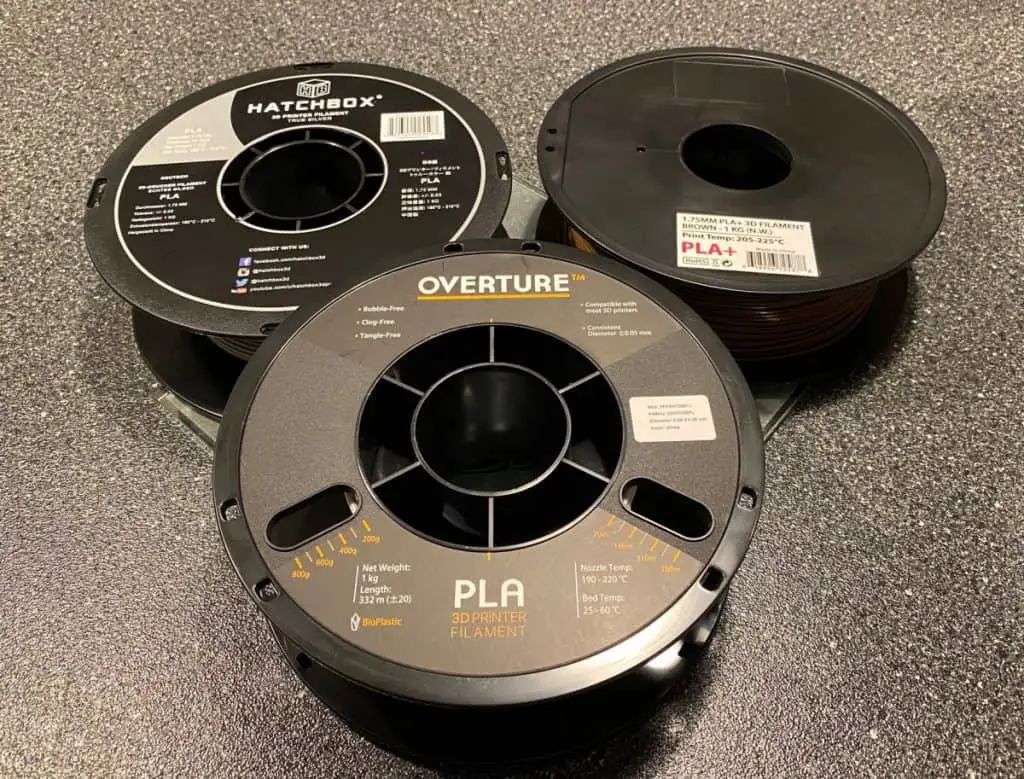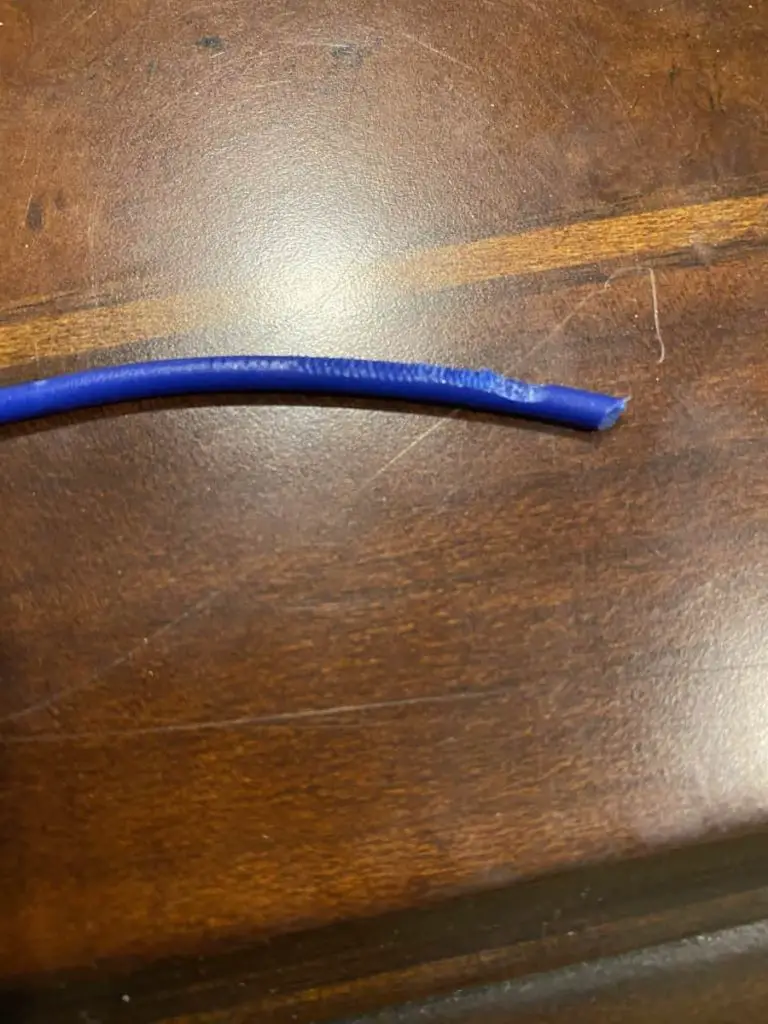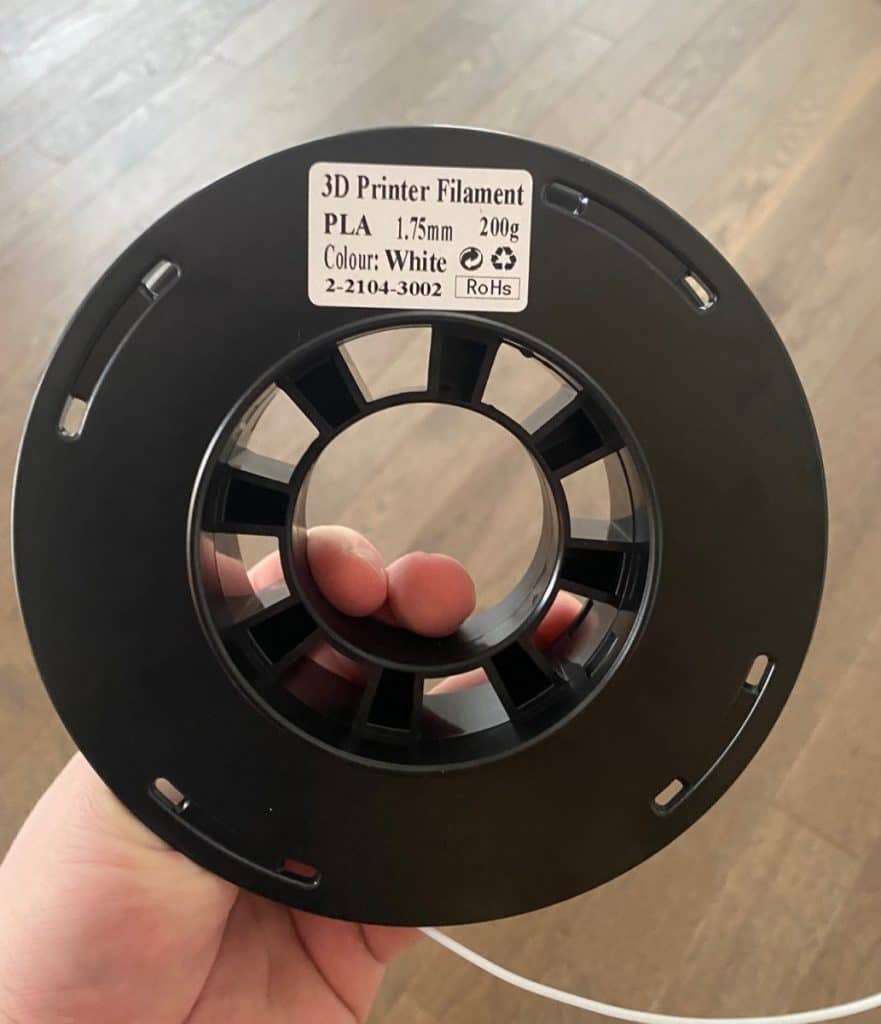PLA filament is one of the most basic, easy-to-use filaments for 3D printing. However, it can become brittle and weak if you expose it to moisture or if it’s too old. So, if you’re having issues with your prints, you might need to know how to tell if your PLA filament has gone bad.
Here’s how to tell if PLA filament has gone bad:
- The 3D printing quality is not good.
- The filament diameter has become larger.
- Your filament jams the printer.
- Your 3D printer makes strange sounds or emits steam.
- The PLA filament has changed color.
- You have physically handled the filament extensively.
- The filament snaps when you test a small piece.
So, let’s look at all the ways you can tell if PLA filament has gone bad together. I’ll walk you through some ways to test your PLA so that you can ensure that it’s not your filament’s fault if a print fails.

1. The 3D Printing Quality Is Not Good
3D printing quality is vital because it can mean the difference between a precise replica of an object or a distorted, plastic mess. Poor quality 3D printing is a waste of expensive PLA filament, and it’s frustrating having to throw out a failed 3D print.
Since your PLA filament is the basis of your model, you’ll immediately see the evidence in your 3D print’s quality if there’s a problem with it.
The main reason that PLA filaments lose their effectiveness is that they absorb moisture from the environment over time.
Moist PLA filament will create steam in the nozzle during the 3D printing process. This steam interferes with how the plastic adheres to itself, and it can also create bubbles, artifacts, or stringing. In the worst case, the moisture can damage your printing nozzle.
Ultimately, printing with moist PLA makes your models look strange, poor quality, and distorted. In addition, your prints will be weaker if you use moist PLA.
3D printing is a gradual process, and your printer creates thin, plastic layers to create the 3D item. Too much steam released from excess moisture in the PLA filament can prevent these thin plastic layers from adhering correctly, resulting in a weaker, brittle print.
2. The Filament Diameter Has Become Larger
One of the easiest ways to check if your PLA filament isn’t in good shape is to inspect its size.
Damp or humid PLA has a broader diameter. The longer your PLA filament spool is exposed to the environment, the more likely it’ll absorb excess moisture and swell.
If you notice that your PLA filament’s diameter looks wider than what it was previously, there’s a good chance it has gone bad. However, don’t fret if your PLA is wet– there is a way to fix it!
If your PLA is moist, you’ll need to dehydrate it with a filament dryer, oven, or dehydrator. Then, keep it in an airtight container (I like to use both a plastic freezer bag and a food storage container). For extra protection, throw in some desiccant like silica gel to keep the humidity down.
You should also store your filament in a dry and dark place, and you can also use a dehumidifier in the room where you keep your printing materials.
3. Your Filament Jams the Printer
PLA filaments that have gone bad are typically swollen from excess moisture. This swelling can make the filament too large to make it through the extruder and nozzle, causing a printer jam.
As the 3D printer processes your job, the PLA filament enters the extruder, and, through a series of precise movements, the extruder melts and molds the filament into shape.
Swollen PLA filament can jam the extruder when it enters, resulting in an error. When this happens, it’s best to clean up the jam and trim back your filament. Then, you can dehydrate the PLA.
You can prevent this by planning your 3D printing, not stocking up on more PLA filament spools than you need, and not using filament that you know is moisture-damaged.

4. Your 3D Printer Makes Strange Sounds or Emits Steam
It’s usual for a 3D printer to make a little noise. Healthy 3D printer sounds include gentle humming of the fan and the extruder as it moves and molds the PLA filament.
Any unusual sounds coming from your 3D printer should be cause for concern as they indicate a bad or moist PLA filament.
As excess moisture in the PLA filament is released, steam is created, making hissing, sizzling, or popping sounds.
You may also notice steam or bubbles exiting the printer, signs that the filament has gone bad.
Some 3D printer owners (especially those living in humid areas) use filament dryers to dehydrate moisture-damaged filaments. While they’re an expensive investment, it could be worth it in the long run, considering the amount of moisture-damaged PLA filament you could save.
Many filament dryers are available online, such as the easy-to-use Jayo Filament Dryer Box (available on Amazon.com). I always recommend this one for people who want a quick and foolproof way to keep their filaments dry since it is simple to use and budget-friendly.
You could also experiment by using your oven to dry out swollen PLA filament. Still, you need to use the optimal temperature and time combination to prevent melting since melting will ruin the filament permanently.
5. The PLA Filament Has Changed Color
An excellent sight test to determine if your PLA filament is no longer in good condition is to see if it has changed color since you’ve bought it.
Exposure to direct sunlight and moisture absorption can change PLA filament color, either subtly or more obviously. That’s because PLA is UV sensitive, and with too much sunlight, your filament will change color and become brittle.
Instead of risking damage to your 3D printer, it’s advisable to discard PLA filament that has changed color.
6. You Have Physically Handled the Filament Extensively
PLA filament comes in spools, and it can sometimes be difficult to measure out the exact length of filament needed for a specific job.
Constantly winding and unwinding your PLA filament spool stresses the polylactide substance, regardless of how careful you are with it.
The older the PLA filament is, the more likely it has been physically handled excessively, making it more prone to breaking or snapping.
So, try to avoid handling your PLA filament spool and only take it out of the package when you are ready to print.

7. The Filament Snaps When You Test a Small Piece
An easy method of quickly checking if your PLA filament has gone bad is to test a tiny section of filament.
Cut off a tiny piece of filament and then gently bend it. If you notice that it snaps easily and seems brittle, it’s likely to be moisture or sun-damaged, which could affect your printing quality.
Sun damage, unlike moisture, is pretty much irreversible, so always keep your filament in an opaque box or container and store it away from windows and sunlight.
Related Articles
- PLA vs PLA+ – What’s the Difference?
- All About 3D Printer Plastic
- Can You Drill Into and Cut 3D Printed Plastic?
- Does PLA Need to Be Kept Dry?
- Can You Spray Paint PLA? Details Inside!
- Best PLA Glue – The Answer Inside!
Conclusion
There are many signs that your PLA filament has potentially gone bad.
If you notice that your 3D prints’ quality is no longer good, if the PLA looks swollen, or if your filament is jamming the printer, it could mean that it is too moist. Likewise, if your printer hisses, crackles, or pops, your filament is probably too humid.
Filament that snaps when you test a small piece is also a bad sign. Otherwise, if your filament has changed color or if you have touched it too much, your PLA might no longer be viable for use.
Make sure you check out our YouTube channel, and if you would like any additional details or have any questions, please leave a comment below or join us on Discord. If you liked this article and want to read others click here.
